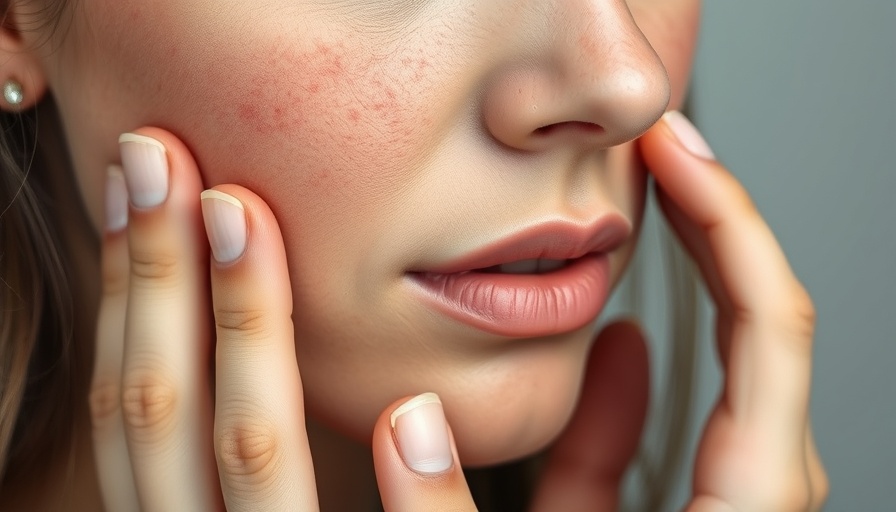
The Breakthrough in Rosacea Treatment: An Examination of Heparin Sodium Allantoin Gel
Rosacea, a chronic skin condition impacting millions worldwide, particularly women aged 25-50, often manifests as facial redness, papules, and pustules, drastically affecting one’s quality of life. In recent studies, a compound heparin sodium allantoin gel has emerged as a promising solution for managing papulopustular rosacea. This innovation may shift the paradigm in rosacea treatment, showcasing a blend of efficacy and safety.
Understanding the Study: Methodology and Findings
Conducted by researchers at Xi'an Jiaotong University, this randomized, single-center trial included 82 adults diagnosed with rosacea, with a median disease duration of three years. Participants were divided into two groups: the experimental group received both doxycycline and the gel, while the control group took doxycycline with a topical hyaluronic acid emulsion.
The results were noteworthy. Over 12 weeks, the experimental group showed significant improvements in skin hydration, transepidermal water loss, as well as a decrease in erythema and related symptoms such as itching and burning. With these promising results, the heparin sodium allantoin gel looks poised to enhance the treatment landscape for rosacea patients.
Enhanced Skin Barrier Function: A Key Benefit
One of the standout findings of the study was the improvement in skin barrier function. Participants using the gel exhibited increased hydration and a significant reduction in transepidermal water loss. This enhanced barrier not only calms the symptoms of rosacea but also provides a protective layer against external irritants, drawing attention to the gel’s multifaceted benefits.
Future Directions: A Call for Broader Research
While the results are promising, further research is essential. The study emphasizes the need to explore optimal dosages and investigate the efficacy of the gel in diverse populations. Such research could pave the way for a more comprehensive understanding of its potential applications, ensuring that all patients can benefit from this innovative treatment.
Myth Busting: Debunking Common Misconceptions About Rosacea Treatment
Despite ongoing discussions about rosacea treatments, many misconceptions persist. A key myth is the belief that topical treatments alone are sufficient. This study underscores the importance of combination therapy, which integrates systemic treatments like doxycycline with topical gels for optimal efficacy.
Moreover, some individuals believe that all skincare products exacerbate rosacea symptoms. However, ingredients such as heparin sodium and allantoin are specifically designed to soothe and repair the skin barrier, contrasting with many harsh ingredients often found in cosmetics.
Practical Insights: Implementing This Knowledge
For individuals with rosacea, it’s crucial to consult with healthcare professionals about incorporating the compound heparin sodium allantoin gel into their treatment plan. Staying informed about the latest research can empower patients not only to make informed treatment decisions but also to challenge conventional wisdom regarding skincare products.
Final Thoughts: What This Means for Rosacea Patients
The promise of compound heparin sodium allantoin gel signifies a hopeful advance in the treatment options available for rosacea. As ongoing studies illuminate this area, both healthcare providers and patients should stay vigilant and informed. By fostering awareness and understanding, a new era of effective rosacea management may soon be within reach.
As we look to the future, one thing is evident: combining ongoing research with patient education will be crucial for leveraging these advancements effectively.
 Add Row
Add Row  Add
Add 




Write A Comment